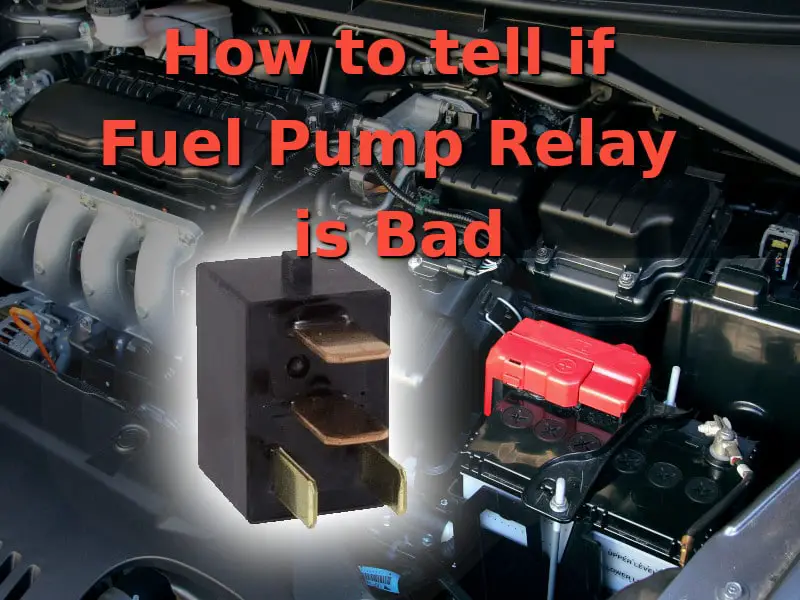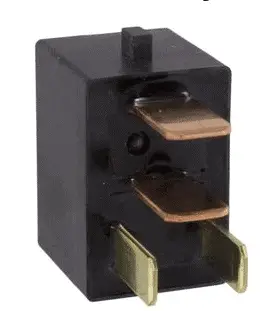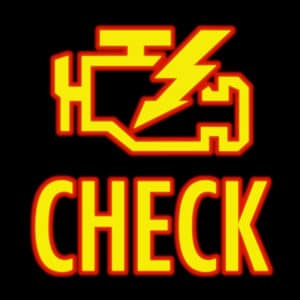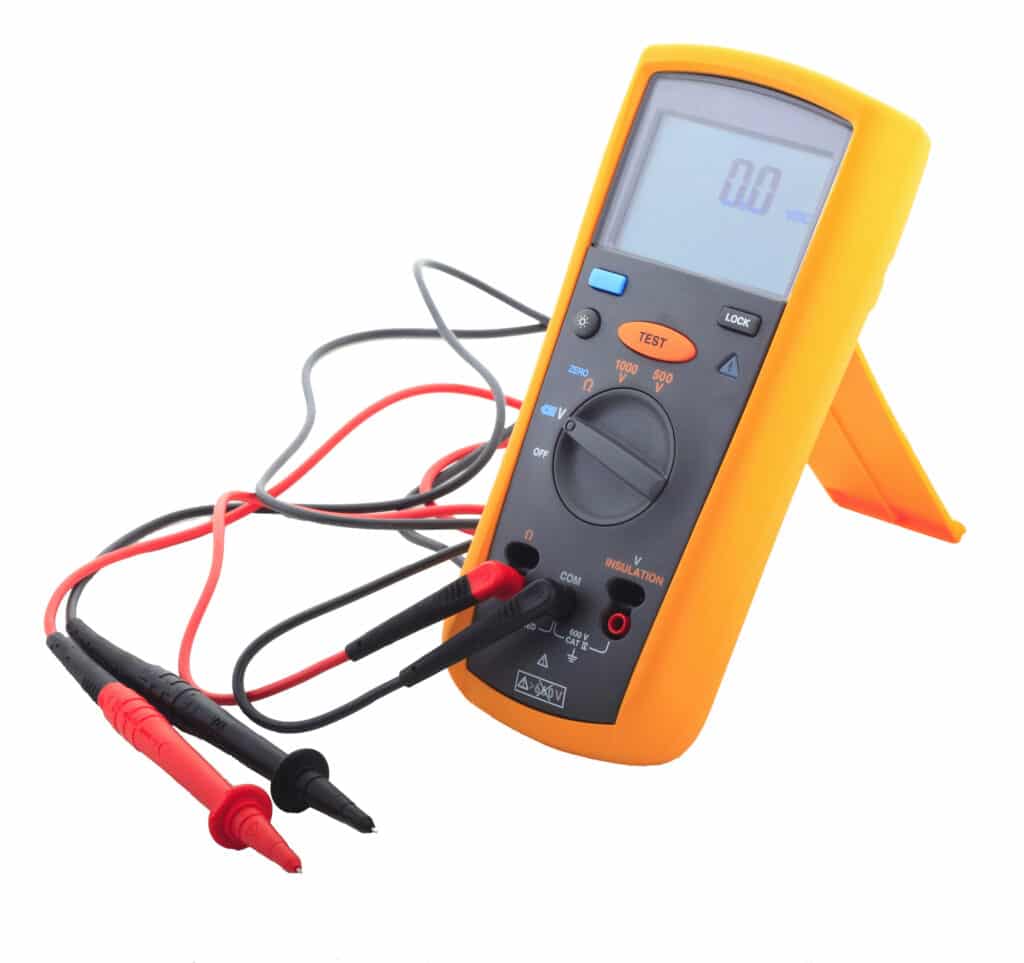Hey! I’m Vince, and in this article, you’ll find the 6 most common symptoms of a bad fuel pump relay.
We also walk you through testing wiring with a Multi Meter so you can learn how to tell if your car’s fuel pump relay is failing.
You won’t have to deal with long starting time, sputtering and misfires any longer!

Vehicle Engines and Fuel
Modern engines need precise amounts of fuel to run properly. The engine demands a certain level or amount of fuel at any given moment. It is the job of the fuel injector pump relay to supply a steady flow of electrical current to the fuel pump. In return, the fuel pump delivers the fuel to the injectors and inside the combustion chamber.
The fuel pump relay is also responsible for helping your vehicle to start. The relay activates the fuel pump to pressurize the fuel system as you turn the key.
And all of this is happening with the precision of an orchestra. Every time you press the gas pedal, the injector pump relay responds by supplying the fuel pump with the required voltage. If there’s something wrong with the relay, you can expect the fuel pump to fail intermittently.
The good news is it’s easy to check for a broken injector pump relay. But before we proceed, it is important to know a bit more about the relay in general.

How to tell if fuel pump relay is bad (6 Signs and Symptoms)
If this part is going out, you’re going to know it right away! Your vehicle is probably stuttering, stalling, has poor acceleration (these are most common symptoms) and a handful of other issues. That’s assuming it still starts!
We suggest getting this part replaced immediately before you damage a fuel line, or your fuel pump. It’s a pretty cheap part (around $30).

1. Check Engine Light (CEL) Illuminated
In most cases, the primary symptom is a check engine light. And you know what this means right? It’s a sign the ECU is holding on to some trouble codes. In order to read the code, you’ll need to hook up an OBD2 scan tool. If you find a P0230 or P0231 OBD2 Diagnostic Trouble Code (DTC), this means a malfunction in the primary circuit of the fuel pump.
When this happens, the ECU is merely saying the voltage readings from the fuel pump relay to the ECU are below the required specifications. But this doesn’t specifically point to a faulty relay. This problem can also be caused by a blown fuse, a shorted fuel pump, frayed wiring, or a blown circuit.
The most common DTC’s you’ll see for this issue are –
- P0627
- P0628
- P0230
- P0231
- P0420
Both the BAFX or Bluedriver kick butt for this task
2. High Mileage
Now this part is designed to last for a long time (100-200k miles) but as we know from the Second Law of Thermodynamics that everything is breaking down. Including your vehicle. So if you have lots of miles on your car, it may be time to replace your faulty fuel pump relay.
3. Long Starting Time
Find yourself cranking the motor over for more than 10 seconds?
Yup, that’s a sign you have fuel issues and should investigate this part as well as your fuel pump and maybe even injectors.
4. Engine Performance Issues – Stalling, Idling, Acceleration, Not Starting
Besides the check engine light, the vehicle will manifest some performance symptoms if the fuel pump relay is malfunctioning. This includes engine stalling, weak acceleration, bad idling, and a no-start condition. If you notice that your engine stalls for frequently than it has in the best, you’ve probably got a faulty pump relay.
And since this issue can be caused by other faulty parts in the fuel system, it is important to know the steps on how to check for a malfunctioning fuel pump relay. You don’t want to end up paying $300 for an OEM fuel pump when all your car needed is a $25 fuel pump relay.
5. Car dies while driving
Have you noticed issues of driving along and suddenly your vehicle shuts down? Yeah it’s scary. It’s a good sign that you need to replace this part though!
6. Silent Fuel Pump Noise
Normally a fuel pump with make a faint clicking or whining noise. This means it’s operational. However, if your fuel pump relay is bad or failing, this noise will be silent.
Get a friend to stand near the gas tank or rear exhaust and see if they can hear any clicking or high pitched hum when you turn the key to the “start” position.

How to test a fuel pump relay
If you suspect your car troubles are caused by a bad fuel pump relay, here are the easy steps on how to do it:
Step 1. Park the car in safe and level ground
Don’t forget to engage the parking brake and put the transmission in Neutral or Park. It’s much better if your vehicle is parked inside a garage, and you’ll know why later.
Step 2: Turn the ignition key in the ON position but don’t start the car
Listen for the fuel pump to actuate as you turn the key. This is the reason why it’s better to park your vehicle in a covered garage. It is easier to listen for the faint buzzing or clicking noise of the fuel pump as you turn the key.
But in some vehicles, it is virtually impossible to hear the fuel pump. If this is the case, proceed to the next step.
Step 3: Raise the hood and locate the fuel pump relay
In most vehicles, the relay is located in the large fuse box in the engine compartment. Remove the cover and check the diagram. You’ll easily locate the relay by referring to the wiring diagram. But if you can’t find it (or if there’s no wiring diagram) you can try the owner’s manual or service manual. If all else fails, you can always search online.
Step 4: The fuel pump relay will emit a clicking or buzzing sound when turning the key in the ON position
If you can’t hear it inside the vehicle (even if the hood is open), have a friend or assistant help you out. If you can’t hear a clicking sound in the fuel pump relay, you’ll need to test it to be sure.
Sorry to interrupt… Confused yet on testing your fuel pump relay? Check out this video from MrDidrill as he wanks us through pulling the fuse box and verifying all the fuel pump relay wiring.
Step 5: Disconnect the negative cable from the car battery
This disables the power to the fuel pump and all related circuits. You’ll need a wrench or socket set for this step.
Step 6: Remove the fuel pump relay
If you can’t remove it by hand, you can use a pair of needle nose plyers to make the job easier.
Step 7: Grab a multi-meter tool and set it to resistance mode
Most fuel pump relays have four main pins: ground, input voltage, load (which is connected directly to the fuel pump wiring), and battery.
Connect the probes of the multi-meter to the load and battery pins in the relay. You’ll need to use a 12-volt power supply or voltage regulator to feed power to the relay. Connect the ground of the power supply to the ground pin in the relay.
I love the Klein Tools Multimeter, but the AstroAI comes highly recommended.
Step 8: Feed power to the input voltage pin
Every time the power touches the input voltage, the multi-meter should beep to indicate continuity. If there’s no continuity, you’re dealing with a broken, busted, or burned out relay.
Step 9: (If Needed) Replace the bad fuel pump relay
Make sure to buy the exact same relay fitted in your car. Install the relay in the fuse box. Don’t forget to put back the fuse box cover.
Before starting the car, open the fuel door and remove the fuel cap. Put the cap back on and make sure it makes a good and tight seal.
Now, start the car. If all goes well, your vehicle will be humming like a brand new car! Take it for a short test drive, and watch out for any engine lights turning ON while you’re driving.
Video Guide
CarsNToys put together an informational video showing the steps to this on a 2002 Nissan Altima.
Common Fuel pump relay locations
If you have your owner’s manual (if you lost it, download a new one at Just Give Me The D*** Manual) pull it out and it should have a nice diagram showing where the location is.
Below is not an exhaustive list but the common places I’ve found this part.
1. Driver’s side kicker panel
Nissan likes to place this fuel pump relay behind a plastic piece near your braking or gas pedal secured by a couple bolts. Just remove the bolts and the cover to access the part!
2. Near the Fuse Box
I’ve seen in various Mazda’s and Toyota’s it’s located in the fuse box or very close to the fuses.
3. Passenger side Firewall near Dipstick
Older Mitsubishi’s, especially the Evolutions, have the pump relay on the passenger side, behind the oil dipstick near the strut/shock housing.
Fuel Pump Relay Replacement cost
When a fuel pump relay fails, the part itself isn’t a bad price. Listed below are a few common parts and what it costs to buy them from a shop. What gets more costly in the labor from the shop if you have to take the vehicle to a professional. They’ll likely charge you at least 1 hour of labor, if not 2-3 hours. If you have a basic multi-meter, some hand tools, and can follow YouTube videos, you should be able to swap out a failing fuel pump relay on your own.
- Toyota Camry Relay: $14.99 (at Autozone)
- 2006 Honda Accord: $56.99 (at Oreillys)
- Ford F150 $18.99 (at Advanceautoparts)
Conclusion
Before ruling out a broken or failing fuel pump, it is better to check, diagnose, and test the fuel pump relay and the associated circuitry. The symptoms of a bad fuel pump relay will vary from one vehicle to the next, and you may get a bevy of trouble codes associated with the P0420 code. Remember that it’s easier and more economical to replace a bad relay than pulling out the fuel pump from the tank.
While you’re at it, do a quick check for a faulty fuel filler neck and bad fuel injectors.
While the above suggestions and symptoms of a bad fuel pump relay are a possible cause of the problem, there could be other issues with the fuel system or electrical system that need attention. Proper diagnostics can pinpoint the exact problem and prevent further damage or inconvenience.



